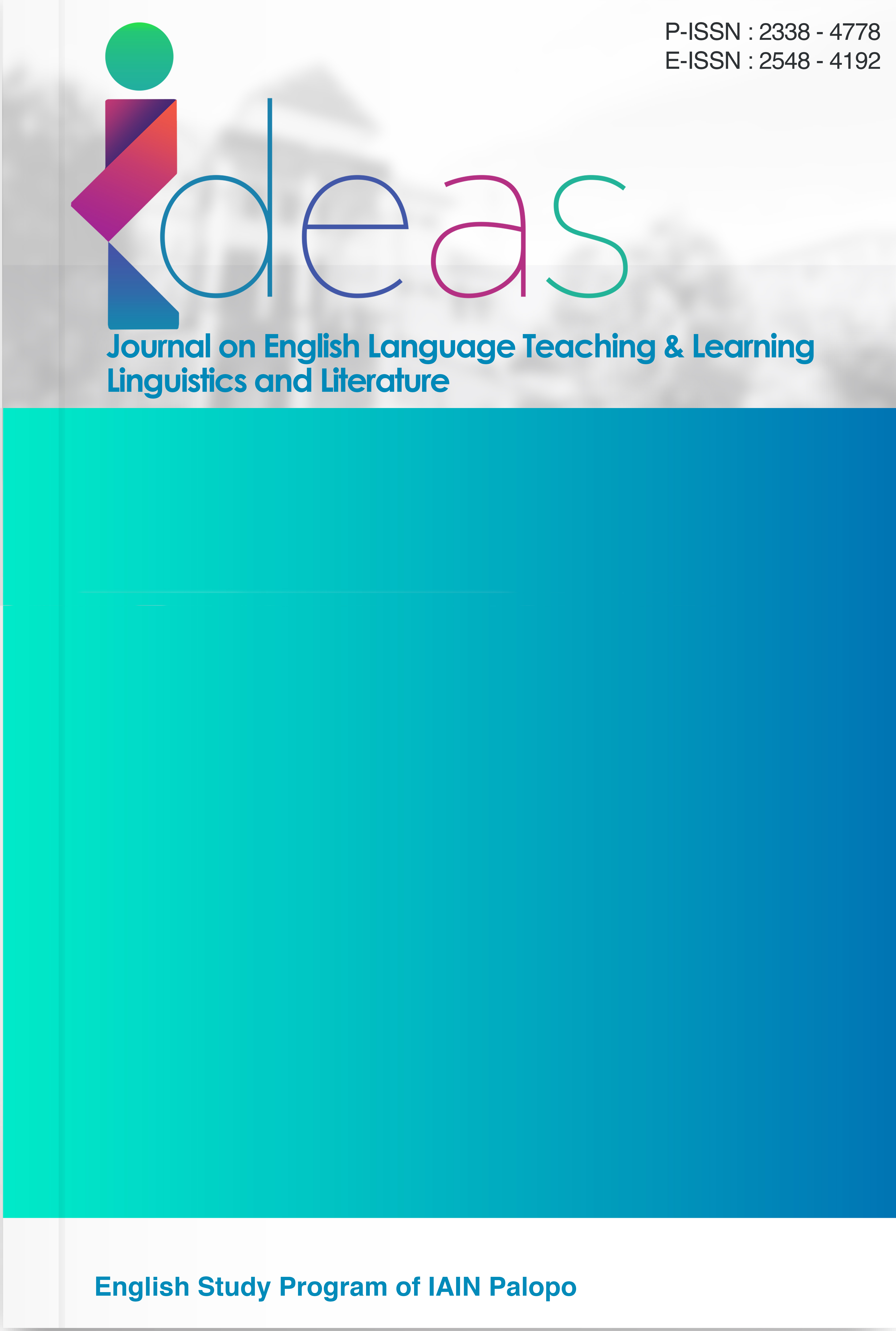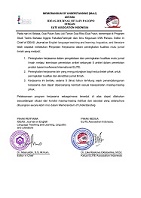An Examination of Grice’s Maxims in the Horror Novel Five Nights at Freddy’s by Scott Cawthon
DOI:
https://doi.org/10.24256/ideas.v13i2.7890Keywords:
cooperative principle, dialogue, horror fiction, maxim types, pragmaticsAbstract
Communication is a fundamental aspect of human interaction, and its effectiveness depends greatly on the cooperation between speakers. One influential framework for analysing this cooperation is Grice’s Cooperative Principle (1975), which consists of four conversational maxims: quantity, quality, relevance, and manner. This article aims to identify the types of cooperative maxims as proposed by Grice (1975) found in the horror novel Five Nights at Freddy’s: Fazbear Frights #2 Fetch by Scott Cawthon. The horror genre is particularly relevant for this analysis because it relies heavily in dialogue to build suspense, ambiguity, and psychological tension, making the application of conversational maxims especially significant. The objective of this study is to identify and classify the types of cooperative maxims, namely quantity, quality, relevance, and manner, that are used in the dialogues between characters. The research applies a descriptive qualitative method, with data collected through observation and note taking techniques, focusing on the dialogue between characters. The analysis revealed that the most frequently used type of maxim is the maxim of quantity (22 occurrences), followed by the maxim of quality (13), relevance (9), and manner (8). These findings indicate that the characters in the novel generally cooperate in communication by providing sufficient, truthful, relevant, and clear information. This research highlights how cooperative maxims are applied in fictional texts, contributing to effective communication and narrative coherence within the horror genre. In addition to narrative cohesion, the results of this study also suggest broader implications for literary and linguistic studies, demonstrating how pragmatic principles can serve as tools for understanding character dynamics, thematic construction, and stylistic strategies in fiction.
References
Birner, B. J. 2013. Introduction to Pragmatics. United Kingdom: Wiley-Blackwell.
Cahyani, R. S., & Budiati. 2022. A Pragmatic Study of Cooperative Principles and Grice’s Maxims in Novel “The Secret Garden” by Frances Hodgson Burnett. Praniti Jurnal Pendidikan, Bahasa, & Sastra, 2(2), 127–137. Retrieved from https://jurnal.unw.ac.id/index.php/praniti/article/view/1628
Creswell, J. W., & Creswell, J. D. (2018). Research design: Qualitative, quantitative, and mixed methods approaches (Fifth edition). SAGE.
Creswell, J. W., & Guetterman, T. C. (2019). Educational research: Planning, conducting, and evaluating quantitative and qualitative research (Sixth edition). Pearson.
Eva Fitrianti, S. S., Husna, L., & Hum, S. THE EFFECT OF CONTEXT THROUGH APPLICATION OF COOPERATION PRINCIPLES IN CONVERSATION OF STUDENTS’KINDERGARTEN OF EKASAKTI: PRAGMATIC ANALYSIS.
Grice, H. P. 1975. Logic and Conversation. In P. Cole & J. L. Morgan (Eds.). New York: Academic Press. https://doi.org/10.2307/324613
Halliday M. A. K and Hasan, Ruqaiya. (1989). Language, Context, and Text: Aspects of Language in a Social – Semiotic. Victoria: Deakin University Press.
Jannah, N. 2017. The Analysis of Cooperative Principle Found in Beauty and The Beast Movie and Its Application in Teaching Speaking to The Eleventh Grade Students of Senior High School 2017. Muhammadiyah University of Purworejo.
Leech, G. N. 1983. Pragmatics (1st Ed). Cambridge: Cambridge University Press.
Levinson, S. C. 1983. Pragmatics. Cambridge: Cambridge University Press. https://doi.org/10.1093/oseo/instance.00076667
Moleong, L. J. 2017. Metodologi Penelitian Kualitatif (Edisi Revi). Bandung: Remaja Rosdakarya.
Robihim, R. (2016). Maxim ojCooperation in Dialogue in a Japanese Novel Saga no Gabbai Bacchan (A Study of Novel Translation from Japanese to Bahasa Indonesia) Robihim. BAHTERA: Jurnal Pendidikan Bahasa Dan Sastra, 15(1), 69-84.
Rasheed, M. H. 2025. A Pragmatic Analysis of Dialogue Between Two Characters In The Old Man and The Sea Based on The Cooperative Principle. Pragmatik : Jurnal Rumpun Ilmu Bahasa Dan Pendidikan, 3(1), 164–180. https://doi.org/10.61132/pragmatik.v3i1.1299
Oktaviabri, R., & Degaf, A. (2023). Cooperative Principles at Work: Unveiling EFL Classroom Interaction in AKM University through a Sociopragmatic Lens. Journal of Pragmatics Research, 5(2), 190–219. Retrieved from https://ejournal.uinsalatiga.ac.id/index.php/jopr/article/view/198
Widiasri, D. A., Budiarsa, M., Sudipa, I. N., & Satyawati, M. S. (2019). Cooperative principle implementation between teachers and students: Indonesian language teaching case. International Journal of Social Sciences and Humanities, 3(2), 302-308.
Yule, G. 1996. Pragmatics (H. G. Widdowson, Ed.). New York: Oxford University
Downloads
Published
Issue
Section
Citation Check
License
Copyright (c) 2025 Made Cahyana, Nur Ayomi

This work is licensed under a Creative Commons Attribution-ShareAlike 4.0 International License.
Authors retain copyright and grant the journal right of first publication with the work simultaneously licensed under an Attribution-ShareAlike 4.0 International (CC BY-SA 4.0) that allows others to share the work with an acknowledgement of the work's authorship and initial publication in this journal.
Authors are able to enter into separate, additional contractual arrangements for the non-exclusive distribution of the journal's published version of the work (e.g., post it to an institutional repository or publish it in a book), with an acknowledgement of its initial publication in this journal.
Authors are permitted and encouraged to post their work online (e.g., in institutional repositories or on their website) prior to and during the submission process, as it can lead to productive exchanges, as well as earlier and greater citation of published work (See the Effect of Open Access)




